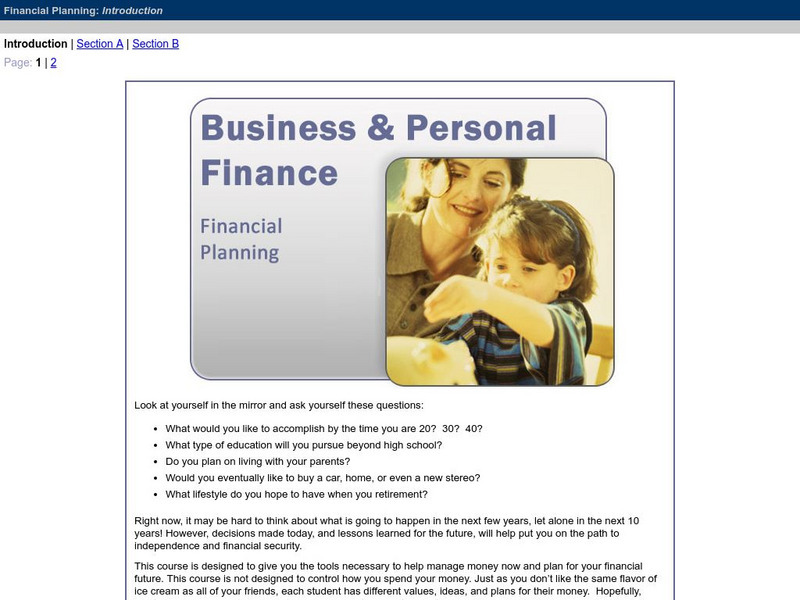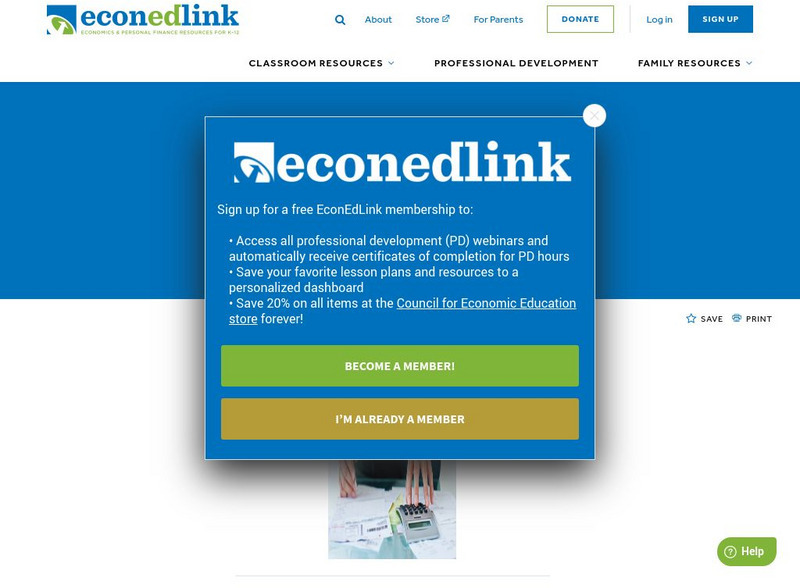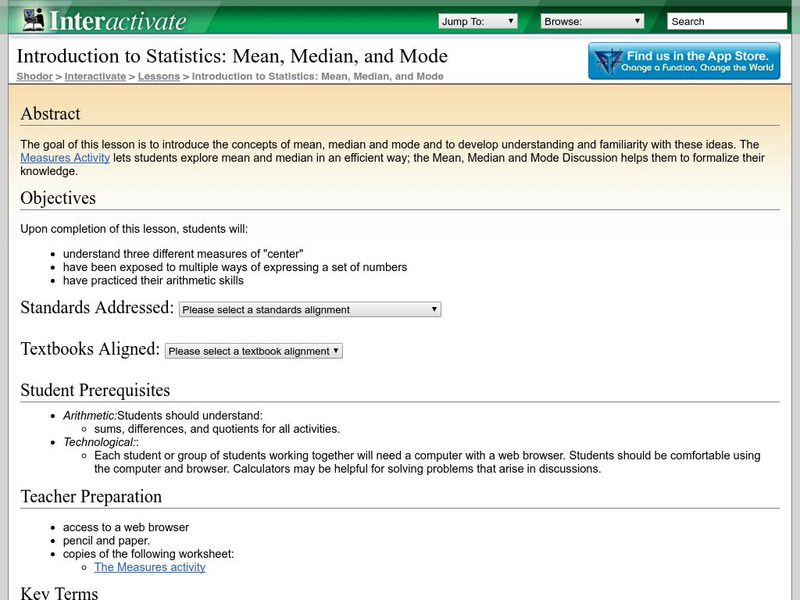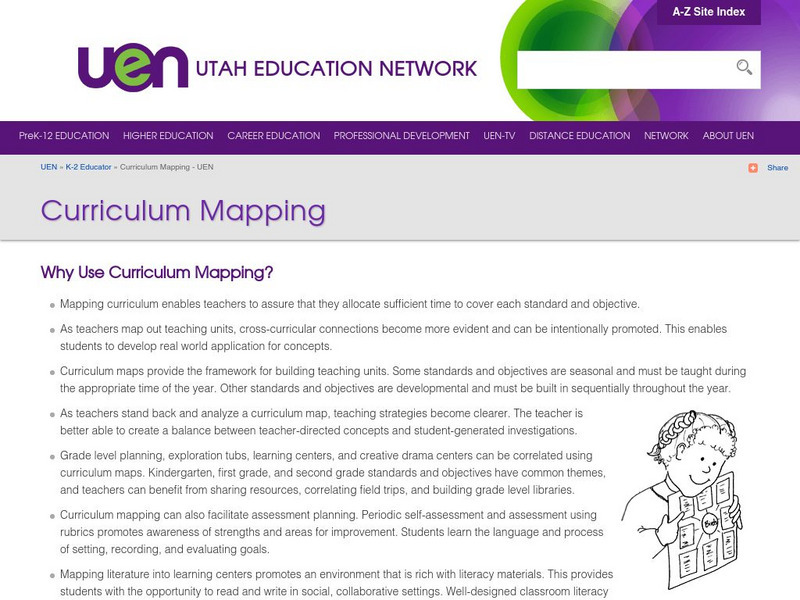PBS
Pbs Learning Media: Sesame Street: Financial Education
Every goal starts with taking the first step. Teaching kids to save money by collecting in a specific place such as a piggy bank or a jar shows kids concretely how much they are saving. Every time you save up to a certain small, new...
Department of Defense
Do Dea: Business & Personal Finance: Module 1: Financial Planning
This self-guided course is designed to give you the tools necessary to help manage money and plan for your financial future. Topics discussed are setting goals, making financial decisions, setting a budget, information on careers and...
Other
Evaluating Internet Based Information: A Goals Based Approach
Educator David Warlick examines the types of assignments that yield real student learning, provide accurate material for assessment of that learning, and reduce the instance of plagiarism. Includes a resource evaluation form that can be...
Consumer Financial Protection Bureau
Consumer Financial Protection Bureau: Saving for Post Secondary Education
Students use an online compound interest calculator to answer questions and create charts that show the value of saving money over time for future education goals.
Consumer Financial Protection Bureau
Consumer Financial Protection Bureau: Comparing Saving and Investing
Students explore the differences between saving and investing and answer questions about which one they'd use to reach different financial goals.
Yad Vashem, The World Holocaust Remembrance Center
Yad Vashem: Using Testimony in Holocaust Education
When teaching a unit on the Holocaust, the use of eye-witness testimony is crucial. These documents allow students to personalize the stories of those that suffered and enhances the learning process. This article walks you through...
Smithsonian Institution
Smithsonian Learning Lab: Wwii on the Home Front: Civic Responsibility
Smithsonian Education presents a lesson covering the WWII's propaganda program which enforced the ideals of Civic Responsibility. Provides eight pages of poster examples, detailed background over the time period, and the goals of the...
Alabama Learning Exchange
Alex: Life After High School
Life After High School is a career research assignment that gives students an opportunity to plan their career path after high school. Even if students deviate from their plan, they need to have a tentative idea that allows them to set...
Council for Economic Education
Econ Ed Link: Money Comes and Goes
Students read two online stories that introduce them to the elements of a budget and show that a successful budget balances money coming in (income) with money going out (expenses and savings). Follow-up activities point out the value of...
Council for Economic Education
Econ Ed Link: The Mystery of the Amazing Farmers
For this lesson, you will be taking on the role of an investigative reporter to solve the Amazing Farmer Mystery. The goal will be to use seven clues provided throughout the lesson in order to figure out how so few farmers can produce...
Council for Economic Education
Econ Ed Link: Phillips Curve
This lesson explores the relationship of unemployment to inflation in the 1960s and after. Young scholars will discover the short-run trade-off between inflation and unemployment when unemployment is less than its natural rate. Students...
University of Notre Dame
University of Notre Dame: Summary of "A Nation at Risk"
The University of Notre Dame offers an overview of the report "A Nation at Risk" (The Commission on Excellence in Education, 1983), that stated that American education was not meeting its goals. Summarizes the findings of the report and...
Yad Vashem, The World Holocaust Remembrance Center
Yad Vashem: The Bericha
Bericha, meaning escape, became the main goal of survivors after the Holocaust. Many had no home or community to return to. Underground networks helped these displaced people find homes in other countries, many in Israel. Read background...
Bill of Rights Institute
Bill of Rights Institute: Occupy Protests and the Bill of Rights
A lesson plan and extension activities focused on the Occupy Protests which began in 2011. Learners will explore the goal of the protests in relationship to the Bill of Rights.
Shodor Education Foundation
Shodor Interactivate: Lesson: Introduction to Statistics
"The goal of this lesson is to introduce the concepts of mean, median and mode and to develop understanding and familiarity with these ideas." This lesson is provided by Shodor Education Foundation.
Science Buddies
Science Buddies: Science Careers: Industrial Safety and Health Engineer
On the job safety is an important goal for industry. The industrial safety and health engineer is the one responsible for recognizing risks, and developing strategies to address them. This Science Buddies site lays out the requirements...
Federal Reserve Bank
Federal Reserve Bank of Atlanta: Economic Systems
Helps students discover the three basic economic questions and how each system answers these questions, identify several key advantages and disadvantages for each economic system, recognize some economic indicators that can measure...
Department of Defense
Do Dea: Physical Fitness Activity
Exercise must be performed regularly throughout life to achieve the benefits of physical fitness, wellness, and disease prevention. In this self-guided unit, you will be introduced to the components of fitness, principles of exercise,...
Practical Action
Practical Action: Squashed Tomato Challenge
Challenge students to take on a real-life problem affecting people in Nepal. Many farmers living on the mountainside there grow fruit and vegetables, including tomatoes. To earn a living, they need to sell these at the local market. The...
Utah Education Network
Uen: Curriculum Mapping
Discover more about curriculum mapping when you visit this informative site. Teachers will gain a better understanding of curriculum mapping through this resource.
Council for Economic Education
Econ Ed Link: Economic & Political Freedom (Grades 9 12)
In this instructional activity, students analyze the concepts of economic freedom and political freedom, identify ways to measure them and explore the relation between measures of well-being and between measures of freedom.













